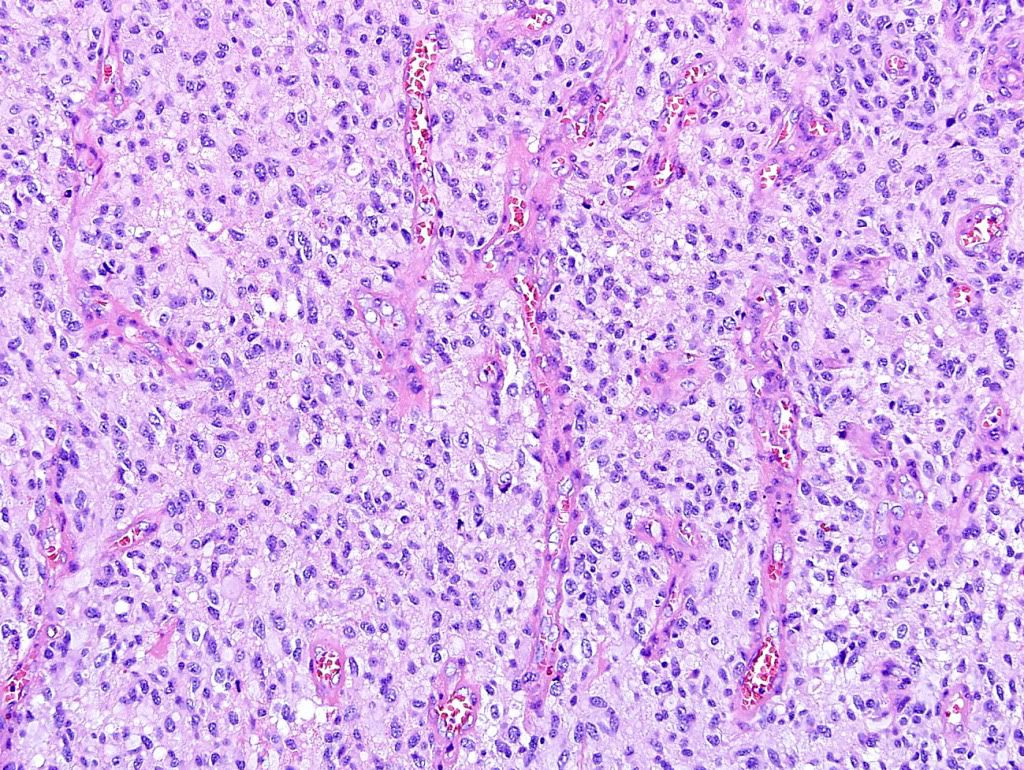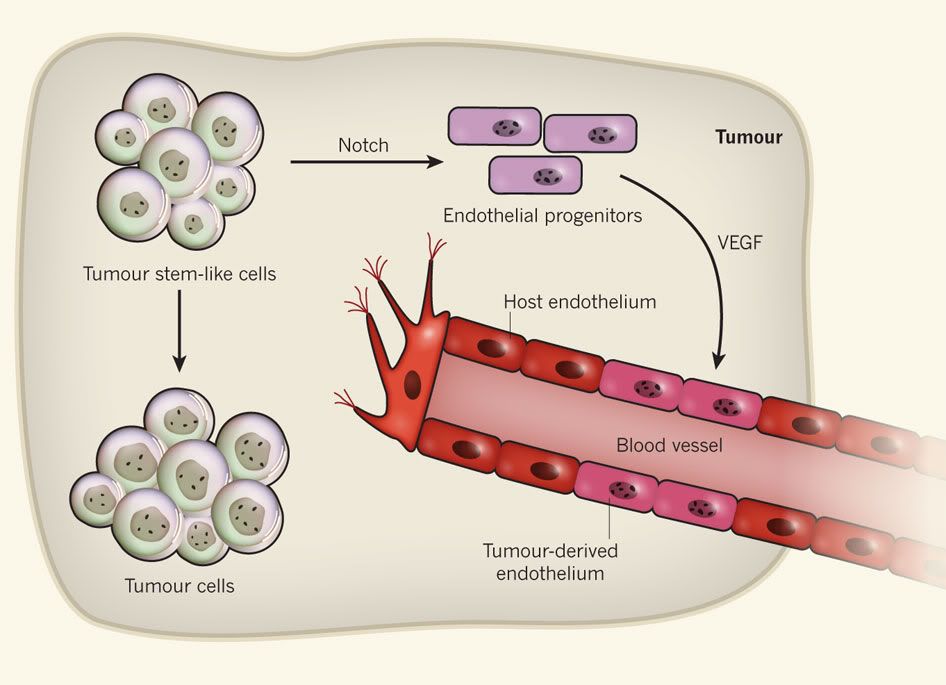一直对肿瘤血管的产生比较感兴趣。绝大多数肿瘤都有很高密度的肿瘤血管,这些血管是肿瘤细胞能获取营养和快速生长的关键。最近一期的《自然》有数篇论文阐述了这方面研究的新发现。
多形性胶质母细胞瘤[Glioblastoma multiforme (GBM)]是一种高度恶性的大脑肿瘤,其特点是肿瘤血管密度极高。
GBM
过去一直认为GBM的肿瘤血管是从大脑原有的毛细血管分化而来。
但最新的研究显示,GBM中有胶质母细胞瘤干细胞样细胞[glioblastoma stem-like cells (GSCs)]的存在,而且这些细胞的前身可能不仅仅是神经细胞。
正常的神经干细胞可以分化成血管内皮细胞。
在胶质母细胞瘤中,神经干细胞和血管内皮细胞的关系很密切也至关重要,肿瘤干细胞和血管床密切接触,产生血管内皮细胞生长素[vascular endothelial growth factor (VEGF)]和间质生成素(stromal-derived factor 1),促进血管生成。
胶质母细胞瘤中的约60%的血管内皮细胞有肿瘤细胞一样的基因改变,证明很大一部分的血管内皮细胞是从肿瘤细胞分化而来的。
Glioblastoma is a highly angiogenetic malignancy, the neoformed vessels of which are thought to arise by sprouting of pre-existing brain capillaries. The recent demonstration that a population of glioblastoma stem-like cells (GSCs) maintains glioblastomas indicates that the progeny of these cells may not be confined to the neural lineage. Normal neural stem cells are able to differentiate into functional endothelial cells. The connection between neural stem cells and the endothelial compartment seems to be critical in glioblastoma, where cancer stem cells closely interact with the vascular niche and promote angiogenesis through the release of vascular endothelial growth factor (VEGF) and stromal-derived factor 1. Here we show that a variable number (range 20–90%, mean 60.7%) of endothelial cells in glioblastoma carry the same genomic alteration as tumour cells, indicating that a significant portion of the vascular endothelium has a neoplastic origin. The vascular endothelium contained a subset of tumorigenic cells that produced highly vascularized anaplastic tumours with areas of vasculogenic mimicry in immunocompromised mice. In vitro culture of GSCs in endothelial conditions generated progeny with phenotypic and functional features of endothelial cells. Likewise, orthotopic or subcutaneous injection of GSCs in immunocompromised mice produced tumour xenografts, the vessels of which were primarily composed of human endothelial cells. Selective targeting of endothelial cells generated by GSCs in mouse xenografts resulted in tumour reduction and degeneration, indicating the functional relevance of the GSC-derived endothelial vessels. These findings describe a new mechanism for tumour vasculogenesis and may explain the presence of cancer-derived endothelial-like cells in several malignancies.
Nature (volume:468, pages:824–828,date published: 09 December 2010)
Glioblastomas are aggressive brain cancers that are nourished by an extensive network of blood vessels. Two groups now show that glioblastoma cells can differentiate into functional endothelial cells as part of the tumour vasculature. These endothelial cells are characterized by the same genetic alterations as the glioblastoma cells and seem to be derived from glioblastoma stem-like cells. This work suggests that some putative cancer stem cells promote cancer growth both directly and indirectly, and may explain the failure of certain anti-angiogenic cancer drugs and aid the design of new therapies.